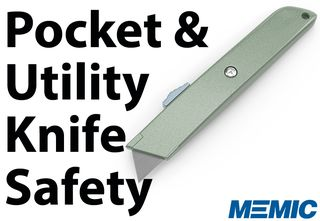Pocket and Utility Knife Safety
February 09, 2012
General
As the emergency room physician sighed he said, “You’re lucky, you didn’t cut nerves or tendons.”
I was sitting on the emergency department stretcher getting ready for stitches in my hand. I had been in a hurry, absorbed in the task, and cut toward myself on the last inch or so of opening an almost indestructible package. I ended up with a deep laceration between my thumb and forefinger.
I thought these tips might be a good reminder for all of us considering the prevalent use of pocket and utility knifes in businesses of all kinds.
- Dull knives slip. Know how to properly sharpen or replace the knife blade.
- Use the right tool for the task. It’s a cutting tool not a screwdriver or a mini pry bar.
- Do not hold items freely in your hand while cutting. Use a stable surface or cutting board and both hands while cutting.
- Do not set the knife down with the handle or blade over the edge of the resting surface.
- You can cut yourself severely while attempting to catch a falling knife. It is a safer to pick it up from the floor or ground.
- Do not store your knife with other tools or in large catch all drawers.
- Never carry an open knife. When not in use, close it or retract the blade. Place it safely in a tool pocket or a sheath.
- When using the cutting blade, make sure to cut away from yourself. Never cut in the direction of your body or your hand.
- When closing the blade into the handle use the palm of the hand on the back side of the blade with your fingers clear.
- Use a “safety knife” that has a guard or stop that prevents bodily injury if the knife slips.
Check out the following resources online for more information:
SafetyToolboxTopics: Utility Knife Safety


